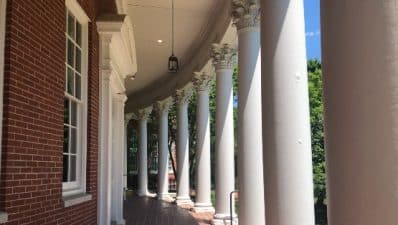
Earthquake safety is paramount when it comes to constructing new buildings. Earthquakes can strike anywhere at any time, but they are most common in states like California, Washington, and Nevada. Seismic events and earthquakes can be responsible for billions in property damage.
Engineering experts are beginning to understand how advanced materials can protect new and retrofitted buildings from experiencing severe seismic damages. These advanced materials such as Fiber-Reinforced Polymer (FRP) and Fiber-Reinforced Concrete (FRC) have the potential to revolutionize the building industry.
Pedram Zohrevand, an engineering consultant and researcher, explains how advanced materials like Fiber-Reinforced Polymer (FRP) and Fiber-Reinforced Concrete (FRC)can help buildings survive the most severe examples of seismic events.
How Are Buildings Damaged in Seismic Events?
Older structures are not built to withstand earthquakes. The damaging mechanism that destroys buildings in an earthquake is called the inertial force. This force causes the lower levels of a building to move while the upper levels and roof stay in the same place relative to the ground. This means that the roof could potentially slip off or collapse.
The more a building structure can absorb energy and withstand lateral movements, the safer it can be during an earthquake. Exiting buildings are usually missing a proper seismic force-resisting system and continuous load path between floor system, walls/frames, and foundation.
The first step for the seismic retrofit of an existing building is to create a seismic force-resisting system by reinforcing its existing walls and frames or/and add new structural walls and frames. The next step is to create a proper continuous load path system between floor diaphragm system, framing, and foundation.
How Advanced Materials Help to Save Structures
There are some traditional seismic retrofitting techniques which are considered as major structural modifications and mostly require vacating the exiting building and halting the operation during the retrofit construction.
Some advanced materials such as Fiber-Reinforced Polymer and Fiber-Reinforced Concrete have been shown very successful in reinforcing and strengthening of existing structures, while their application is with minimal disturbance to the operation of an existing building.
These materials can be used on the surface of existing structural elements, such as FRP wrapping of walls and columns, and can be used in specific localized areas, such as the application of fiber reinforced concrete at connections, wall boundaries, and base of columns and walls within footings.
The accelerated and simple application techniques of these advanced materials can be very helpful in seismic retrofitting of existing buildings while keeping them under operation and reducing the cost and time of construction significantly.
Ways to Use Earthquake-Safe Advanced Materials
There have been several successful cases of seismic retrofit of existing concrete buildings with Fiber-Reinforced Polymers, and the use of Fiber Reinforced Concrete in the retrofit of bridge structures. The design and application techniques of such advanced materials for the retrofit of existing structures are being incorporated in new design codes which can significantly change the future of building retrofit industry.
Areas of Concern
While there are many tools, resources, and establish techniques for the use of advanced materials in the seismic retrofit of existing buildings, there is not enough support from Cities and Building Officials for these innovative retrofit approaches which can save building owners significantly.
Continual Innovation
Helped by researchers like Pedram Zohrevand, builders are able to use advanced materials to protect their structures and their occupants from earthquake damages. Earthquakes can cause a severe impact on a community, along with their damaging effect on the local economy.
It is vital that more areas of the country begin instituting earthquake resistance into their building codes. Advanced materials such as Fiber-Reinforced Polymers and Fiber Reinforced Concrete should be able to protect future and retrofitted buildings from severe damage, saving lives and property.










